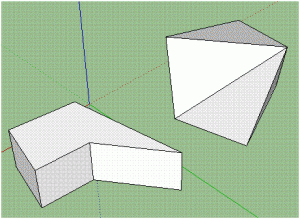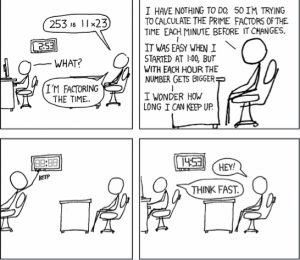Clothes Shopping
The time is fast approaching when you will be out interacting with actual high school students, and then you will need to change your wardrobe (most of you). Now, your goals here are two fold.
1. Don’t look like a high school student. Unless you’re over 35, you’ll probably make things easier on yourself (especially as a temporary classroom presence) if you dress in a way that distinguishes you from the students around you. Gentlemen: you can take the time honored approach of wearing a tie. Putting on a tie makes you look older and more official. Gentlewomen, we have a more difficult problem: you know how to dress without taking any effort, and you know how to dress up, and neither of these is the desired result. What you need are “teacher clothes”. If you own a suit, that will probably work, but only if it doesn’t look too nice, which brings us to goal 2:
2. Look less interesting than the math you are teaching. Really. If they’re looking at you, they’re not thinking about the math. Sometimes they’re really not thinking about the math…. Let me share a couple of stories that are (thankfully) not about me.
Mrs H has a class of 9th grade algebra students, mostly boys, that has gone from abysmal (mostly failing) to really pretty good (good grades so far) due to one unusually attractive girl being in, and then leaving the class. As one boy put it “I just couldn’t think straight when she was in here. She was so hot that it just took my breath away!” One of Mrs H’s loyal readers sent her an article about a study that shows that men get measurably stupider after talking to an attractive woman. Mrs H tells it better than I do, of course, so you should go read it (the story of the freshmen boys, the study of intellectually challenged men, and the follow up with the algebra class).
Then we have the story from Rebecca Bell Branstetter who was told in an evaluation that she wasn’t totally professional because her pants were a little tight. Yeah. And then there were the cat calls on the day when she decided to dress in what would be considered a professional outfit if she were not, in fact, working in a middle school (read the whole painful story here) .
So anyway, the moral of the story is: look neat, but don’t look too good. When you were dressed up last week I saw a few shirts that were a little too low, or a little too tight. So anyway, please look at your wardrobe critically before someone else does.







